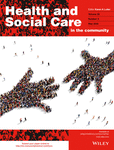Personalising Safe Sleep Messaging for Infant Caregivers in the United States
Abstract
The purpose of our study was to better understand why parents/caregivers might not practice safe sleep behaviours. In autumn 2016, we conducted ‘pulse’ interviews with 124 parents/caregivers of children under the age of one year at a variety of local community events, festivals and meetings in cities with high infant mortality rates around the Midwestern US state of Ohio. Through an inductive approach, pulse interviews were analysed using thematic coding and an iterative process which followed for further clarification of themes (Qualitative Research in Psychology, 2006, 3, 77; BMC Medical Research Methodology, 2013, 13, 117). The six major themes of underlying reasons why parents/caregivers might not practice safe sleep behaviours that were identified in our coding process included the following: (a) culture and family tradition, (b) knowledge about safe sleep practices, (c) resource access, (d) stressed out parents, (f) lack of support and (g) fear for safety of baby. Using the descriptive findings from the pulse interviews, qualitative themes and key informant validation feedback, we developed four diverse fictional characters or personas of parents/caregivers who are most likely to practice unsafe sleep behaviours. These personas are characteristic scenarios which imitate parent and caregiver experiences with unsafe sleep behaviours. The personas are currently being used to influence development of health promotion and education programs personalised for parents/caregivers of infants less than one year to encourage safe sleep practices.




